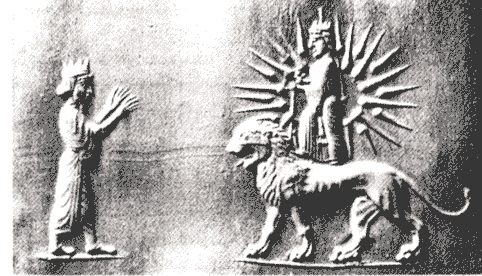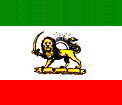|
The
Origin of Christmas
By Ali Sina
Is really Christmas Christ's mass? Was Jesus born on 25th of December?
According to some historical records, Christmas was first celebrated on
January 6 based on the old Julian calendar. The Orthodox Christians still
celebrate their Christmas on January 6. Obviously even the
Christians do not agree over the date of the birth of Christ. Some
Christians believe that the birth of Christ took place in late summer or
early fall and some say it was during the spring.
In the Luke 2:8 we read: "And there were in
the same country shepherds abiding in the field, keeping watch over their
flock by night."
December is the rainy season in Palestine and the weather is cold. The
shepherds do not keep their flock in the fields during December but since
mid October they are kept in the fold.
The origin of this festivity is presumed to be Mithraic and about 4000
years old. Mithra was the god of light in ancient Iran. The symbol of
Mithra is Sun. Iranians used this symbol in their flag for at least the
last 2500 years. The period of 17th to 24th of December was the duration
of this feast. The 21st of December, which is the solstice of winter, is
still celebrated in Iran. It is called “Yalda” and it represents the
victory of light over darkness, which symbolizes the triumph of good over
evil. Mithraism was brought to Europe by Greek soldiers after the defeat
of the Persians by Alexander and by the forth century AD it was the
predominant religion of Europe and the main rival to Christianity. The
worship of Mithra spread throughout Asia to Europe where he was called
Deus Sol Invictus Mithras. Romans adopted this festivity to celebrate the
god, Saturn, and the rebirth of the sun god during the winter solstice.
The winter holiday became known as Saturnalia and began the week
prior to December 25th. The festival was characterized by gift-giving,
feasting, singing and the priests of Saturn called dendrophori, carried
wreaths of evergreen boughs in procession.
Noting that days start becoming longer after the winter solstice, the
ancients gave birth to the myth that the sun-god rises from his death
after
three days. This belief of the death and resurrection of god was later incorporated
into Christianity. Mass is the public celebration of Eucharist, the
sacrament and the central act of worship in many Christian churches, which
was instituted at the Last Supper and in which bread and wine are
consecrated and consumed in remembrance of Jesus's death. The word "Mass" in Christmas means
death and the ritual of the Mass involves the death of Christ, and his
consequent resurrection.
Prior to the dominance of Christianity the Romans celebrated
this festivity during the 25th of December to 6th of January. Mithraism gained
favor by the Emperor Commodus and Julian and in 307 Diocletian built a
temple on the Danube River dedicated to Mithra. Mithraism spread
throughout Europe from Rome to the province of Numidia in North Africa up
to England and Scotland.
But after the conversion of emperor Constantine in 313 A.D. Christianity
was spread throughout the empire and Mithraism, as St. Jerome reports, was
forcefully subdued especially in Rome and in Alexandria. In the forth
century, Pope Leo destroyed the temple of Mithra (376 A.D.). Despite that
the Mithraic festivity of the birth of the Sun continued, as it was a
convenient time to be merry in the middle of the winter. Even today many
celebrate the Christmas although they are not Christians. It was not till
the year 530 AD that the church commissioned the Monk Dionysius Exiguus to
proclaim this popular festivity as the birth of Christ. Constantine
converted to Christianity but he kept celebrating this pagan festivity and
transformed it into the "Christian" holiday of Christmas.
The use of evergreen tree in Christmas festivities comes from Germany
where it was used in worship and celebration of the yule god as well as in
observance of the resurrected sun god.
The evergreen represented life and also was regarded as a phallic
symbol in fertility worship. It was believed that the red holly was a
symbol of the menstrual blood of the queen of heaven, Diana. The white
berries of mistletoe were considered to be the droplets of the semen of
the sun god. Branches of holy and mistletoe were hung in doorways of
temples and homes and it was believed that kissing beneath them will make the spirits of the god and goddess to enter
one's body and make them
fertile.
The New Schaff-Herzog Encyclopedia of Religious Knowledge explains:
"How much the date of the festival depended upon the pagan Brumalia
(December 25th) following the Saturnalia (December 17th-24th), and
celebrating the shortest day of the year and the 'new sun'...cannot be
accurately determined. The pagan Saturnalia and Brumalia were too deeply
entrenched in popular custom to be set aside by Christian influence...The
pagan festival with it's riot and merrymaking was so popular that
Christians were glad of an excuse to continue its celebration with little
change in spirit and in manner. Christian preachers of the West and the
Near East protested against the unseemly frivolity with which Christ's
birthday was celebrated, while Christians of Mesopotamia accused their
western brethren of idolatry and sun worship for adopting as Christian
this pagan festival"
St Augustine says " we hold this (Christmas) day Holy, not like the
pagans because of the Birth of the Sun, but because of the birth of him
who made it (Christmas) day Holy, not like the pagans because of the Birth
of the Sun, but because of the birth of him who made it"
This clearly shows that this festivity was dedicated to
the Birth of the Sun that was adopted by the Christians.
Apart from Christmas, Christianity absorbed many
Mithraic myths and legends like immaculate birth, baptism, Eucharist, 12
disciples, birth in a cave/stable, the presence of shepherds at the time
of the birth
and the resurrection.
The midwinter was celebrated by many cultures. In Babylon it was dedicated
to Queen of Heaven, in Greece it was to Dionysos and Adonis, In Rome it
was a to Saturn, in England it was to the Nordic God Balder but it is the
Persian myth of the birth of the solar God Mithra that is most likely the
origin of Christmas.

 In this historically priceless tablet you can see Ardshir II (Xerex) worshipping Anahita
who is riding the Iran's lion and Mithra is rising from the lions back.
Now take a look at the lion and sun in the emblem on Iran's flag. Later on a sword was placed in the right paw
of the lion. This represented Zulfiqar the sword that Muhammad took as
booty from Bani Qaynuqa, the first Jewish tribe that came under his wrath,
after he banished them from Medina. Zulfiqar later fell into the
possession of Ali, Muhammad's son in law. The Iranian flag until the Revolution of 1979 had the sword
and unfortunately up to this day some Iranian nationalists who oppose the rule of
Islam
in Iran keep that sword in their flag.
This is the
official site of Reza Pahlavi the son of Iran's last Shah. Even he keeps the
zulfiqar in the hand of the Iranian lion.
In this historically priceless tablet you can see Ardshir II (Xerex) worshipping Anahita
who is riding the Iran's lion and Mithra is rising from the lions back.
Now take a look at the lion and sun in the emblem on Iran's flag. Later on a sword was placed in the right paw
of the lion. This represented Zulfiqar the sword that Muhammad took as
booty from Bani Qaynuqa, the first Jewish tribe that came under his wrath,
after he banished them from Medina. Zulfiqar later fell into the
possession of Ali, Muhammad's son in law. The Iranian flag until the Revolution of 1979 had the sword
and unfortunately up to this day some Iranian nationalists who oppose the rule of
Islam
in Iran keep that sword in their flag.
This is the
official site of Reza Pahlavi the son of Iran's last Shah. Even he keeps the
zulfiqar in the hand of the Iranian lion.
.gif) The Islamic Republic in their hatred of Iran and what is Iranian eliminated the lion and the sun completely and
replaced them with a sign copied from Sikh's emblem supposedly reading
Allah. The Islamic Republic in their hatred of Iran and what is Iranian eliminated the lion and the sun completely and
replaced them with a sign copied from Sikh's emblem supposedly reading
Allah. 
I have deleted the sword of Islam returning our emblem to its
original form, and I urge all Iranian patriots to do the same. (This image
was created by an Iranian youth). Let us get
rid of Islam and its vestige in our flag. Do we really want to show off a stolen
sword in our flag that was used against our country and spilt the blood of
our forefathers?
But to the rest of you who celebrate the holydays now known as
Christmas, remember that the origin of this beautiful
festivity is not the birth of Christ but the birth of life, hope and love.
It represents the victory of light over
darkness. It is the triumph of good over evil.
Happy holydays and merry Christmas, Hanaka,
Yalda... to all of you. These are all excuses to be merry, to love, to
share and to give and what is more beautiful than that? This is the
time to remember the poor and the needy, time to renew friendships, to
visit the elderly, invite them over and make them feel loved. It is time
to give gifts to children and make them feel special. Who cares what is
the origin of Christmas! It is the best time of the year to remember we
are humans and we are bound together with love.
|
|
